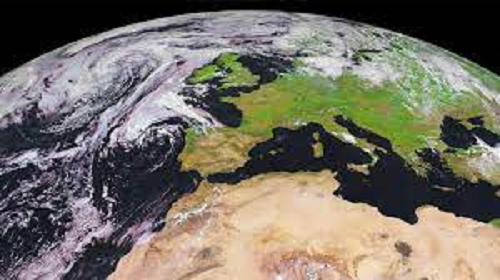On Tuesday, a new European satellite will launch that will considerably enhance forecasting of sudden, intense storms, allowing us to better prepare for them.
The Meteosat-12 weather satellite will be launched into the sky by an Ariane rocket to monitor the European continent, the Middle East, and Africa.
It is the first spacecraft of a multibillion-euro observation system.
It is arguably this year’s most significant European space launch, replacing technology that is more than 20 years old.
“Look at the storm that impacted Germany, the Netherlands and Belgium last year where over 200 people lost their lives. These events are tragic,” said Phil Evans, the director general of Eumetsat, the inter-governmental organisation that manages Europe’s weather satellites.
“More accurate, frequent and relevant observations from space are absolutely essential to provide better forecasts and warnings which help us reduce and mitigate the impacts of these severe weather events.”
Since 1977, Europe has had its own meteorological satellite orbiting the Earth. The new imager, which will be available on Tuesday, is the third generation in the series.
Meteosat-12 will return a complete image of the weather beneath it every 10 minutes, which is five minutes faster than the current rate. It will be able to see even smaller objects in the atmosphere, down to 500m across, and in a wider range of light wavelengths.
The amount of data received by national forecasting agencies such as the UK Met Office and Meteo France will skyrocket.
The inclusion of a camera to detect lightning is one of the significant innovations. The organizations hope this will help with “nowcasting,” or the ability to track and warn of impending, hazardous events. This is because lightning is a tracer for strong winds, heavy rain, and hail.
Lightning may be tracked via radio frequency emissions for a long time, but they are mostly air-to-ground strikes, whereas 90% of lightning is air-to-air, or intra-cloud.
“The new Meteosat instrument is set to be a game-changer,” said Simon Keogh from the UK Met Office. “It will give us a much better handle on total lightning. That’s something we need to know if we’re forecasting for helicopter operations in the North Sea, for example. Likewise, if there are hazardous materials being unloaded from aircraft, even passengers, we need to know if there is a lightning risk,” he told BBC News.
Three spacecraft will eventually function together in the new generation system.
In 2026, a second imager will be launched to take faster images of Europe (every 2.5 minutes). Prior to that, in 2024, a “sounding” spacecraft will launch to measure temperature and humidity as they travel through the atmosphere.
With replacement satellites already on order for the first operational trio, Europe will be covered long into the 2040s.
This capability is not economical. The European Space Agency (Esa) member states have contributed €1.4 billion (£1.2 billion) to research and development.
The recurring expenditures are projected to reach €2.9 billion (£2.5 billion) for Eumetsat states.
“It’s a long process with trade-offs,” said Paul Blythe, who steered the Meteosat development for Esa.
“Some of the detector elements and the optical elements that we have on board have taken six, seven, eight years to bring to fruition from the initial setting of the requirements through lots of development work and finally getting the product to build into the satellite. After that, we have to qualify the whole system. It isn’t a quick activity.
“We will benefit from an economy of scale by buying six satellites at once. If you only buy three or four then it’s clear the next generation will cost even more.”
If €4.3bn (£3.7bn) still seems like a lot of money, consider the benefits of accurate weather forecasting.
Giving the people confidence to go about their everyday lives, reducing road accidents, or enabling sectors such as aviation and shipping to operate more effectively – there is a clear added value to the economy that multiple evaluations have determined to be worth billions of dollars every year.
Meteosat-12 is set to launch from Europe’s spaceport in French Guiana at 17:30 local time on an Ariane rocket (20:30 GMT).









